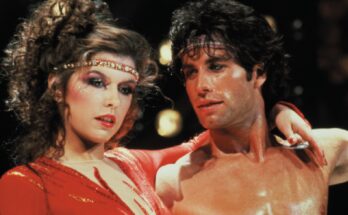The Great Escape (1963)
The Great Escape (1963) is an epic World War II adventure film directed by John Sturges, based on the true story of a massive Allied escape from the German prisoner-of-war camp Stalag Luft III. The film stars Steve McQueen, James Garner, Richard Attenborough, Charles Bronson, and James Coburn, and has become one of the most iconic war films ever made — blending suspense, ingenuity, camaraderie, and tragedy.
The story begins in 1943, deep in Nazi-occupied Europe. The Germans have built a new high-security prison camp — Stalag Luft III — designed specifically to hold the most troublesome Allied prisoners, men who have repeatedly escaped from other camps. Believing this camp to be escape-proof, the German Luftwaffe gathers hundreds of captured airmen there, hoping to end their escape attempts for good. However, the prisoners — made up of British, American, Canadian, and other Allied officers — immediately begin plotting a daring mass breakout.

The mastermind behind the operation is Squadron Leader Roger Bartlett (Richard Attenborough), nicknamed “Big X.” Calm, brilliant, and determined, Bartlett organizes a team of experts among the prisoners: Danny Velinski (Charles Bronson), the claustrophobic tunnel digger; Henley (James Garner), the charming scrounger who can obtain almost anything; Sedgwick (James Coburn), the inventive Australian; and Hilts (Steve McQueen), the rebellious American pilot known as “The Cooler King” for his repeated solitary confinements after escape attempts.
Their audacious plan involves digging three tunnels simultaneously — code-named Tom, Dick, and Harry — to confuse the guards and increase their chances of success. The prisoners use remarkable ingenuity: stealing wood for tunnel supports, forging documents, making compasses, sewing civilian clothes, and even using powdered dirt from the tunnels to disperse throughout the camp. Every man contributes, working tirelessly under the Germans’ noses.

Tensions rise as security tightens and dangers multiply. Some tunnels are discovered, men are caught and punished, and suspicions grow. Despite setbacks, Bartlett refuses to give up. Finally, one tunnel — Harry — is completed, and the night of the escape arrives. Through incredible coordination, 76 prisoners crawl through the narrow tunnel to freedom before it is discovered.
Once outside, the escapees scatter across Europe. Some attempt to reach neutral Switzerland, others head for France or the coast. The film shifts into thrilling chase sequences as German soldiers and Gestapo agents pursue them relentlessly. Many are recaptured; some are killed. Bartlett and several others are eventually caught, and in a chilling moment of brutality, fifty of them — including Bartlett — are executed by the Gestapo on direct orders from Hitler.
Only three men successfully make it to freedom. Meanwhile, back at the camp, Hilts — recaptured after a dramatic motorcycle chase and jump across barbed wire — is thrown back into solitary confinement, defiantly bouncing his baseball against the wall.
The Great Escape ends on a somber yet heroic note. Though most of the escapees perish or are captured, their courage, resourcefulness, and unity represent the indomitable spirit of freedom — a timeless testament to the human will to resist oppression, even in the darkest of times.



